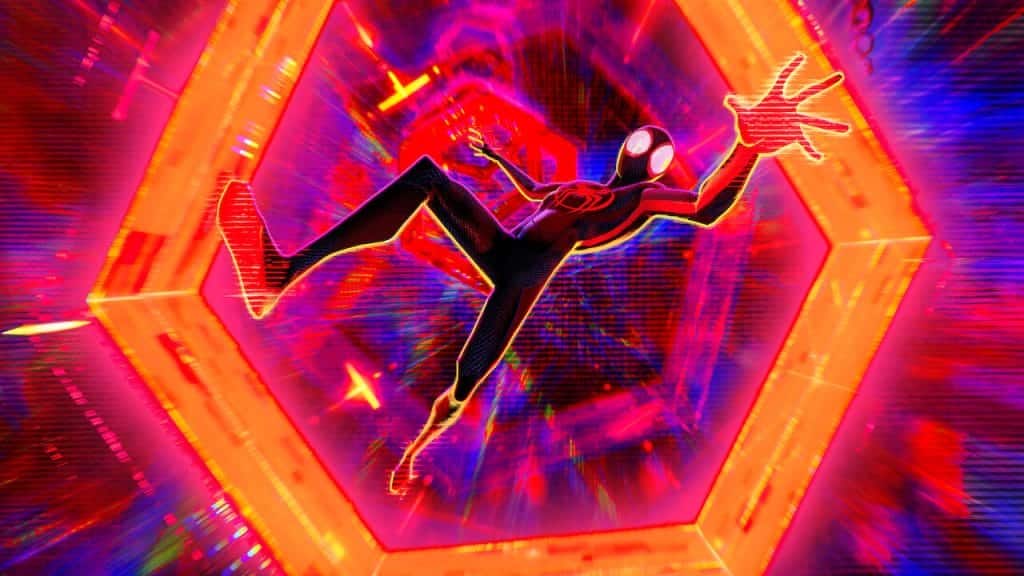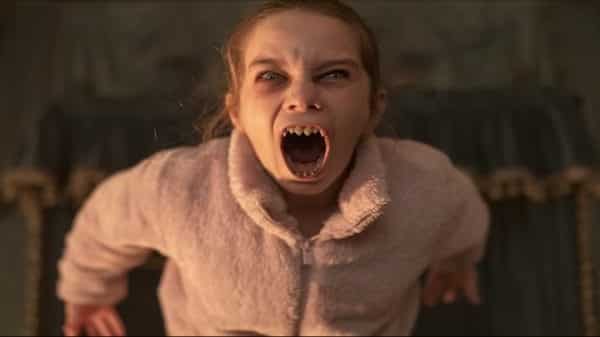When “Spider-Man: Into the Spider-Verse” was released in December 2018, it instantly shot to popularity among viewers, praised for its story writing, animation, and music. After its sequel, “Across the Spider-Verse” released in June 2023, the series found further acclaim, trending across multiple platforms.
The series tells the story of a Brooklyn teen named Miles Morales and his journey of becoming Spider-Man while battling loss, loneliness, and villains far bigger than himself. He differs only slightly from his comics version, which began their run in 2011.
Miles is joined by Gwen Stacy, aka Spider-Gwen or Spider-Woman, and Peter B. Parker, a variation of the “classic” Spider-Man, and he gains more friends along the way. These familiar characters largely remain the same in their characterization, given many cameos to their original storylines. Besides comic references, what makes this series so unique?
1. Eye-Catching Character Designs
/cdn.vox-cdn.com/uploads/chorus_image/image/61676861/spider_man_into_the_spider_verse_dom_tao410.1033_lm_w6_dgordon_cropped.0.jpg)
Each of the characters is based on a pre-existing comic design, though some change more than others. For example, Gwen Stacy gets an iconic haircut in “Into the Spider-Verse” that had not been seen before in other versions.
Other characters simply got more detail and style added to their comics looks, such as Spider-Man India, aka Pavitr Prabhakar, and Spider-Punk, aka Hobie Brown. Both had simpler designs in their comic iterations. Given the stylized nature of the movies, they fit in with the rest of the cast much better with their added flair.
These designs help each character stand out from the others, despite all being variants of Spider-Man. A lot of attention and love has gone into these characters, making the viewing experience all that more enjoyable.
2. Diverse Cast – Without Making it a Gimmick
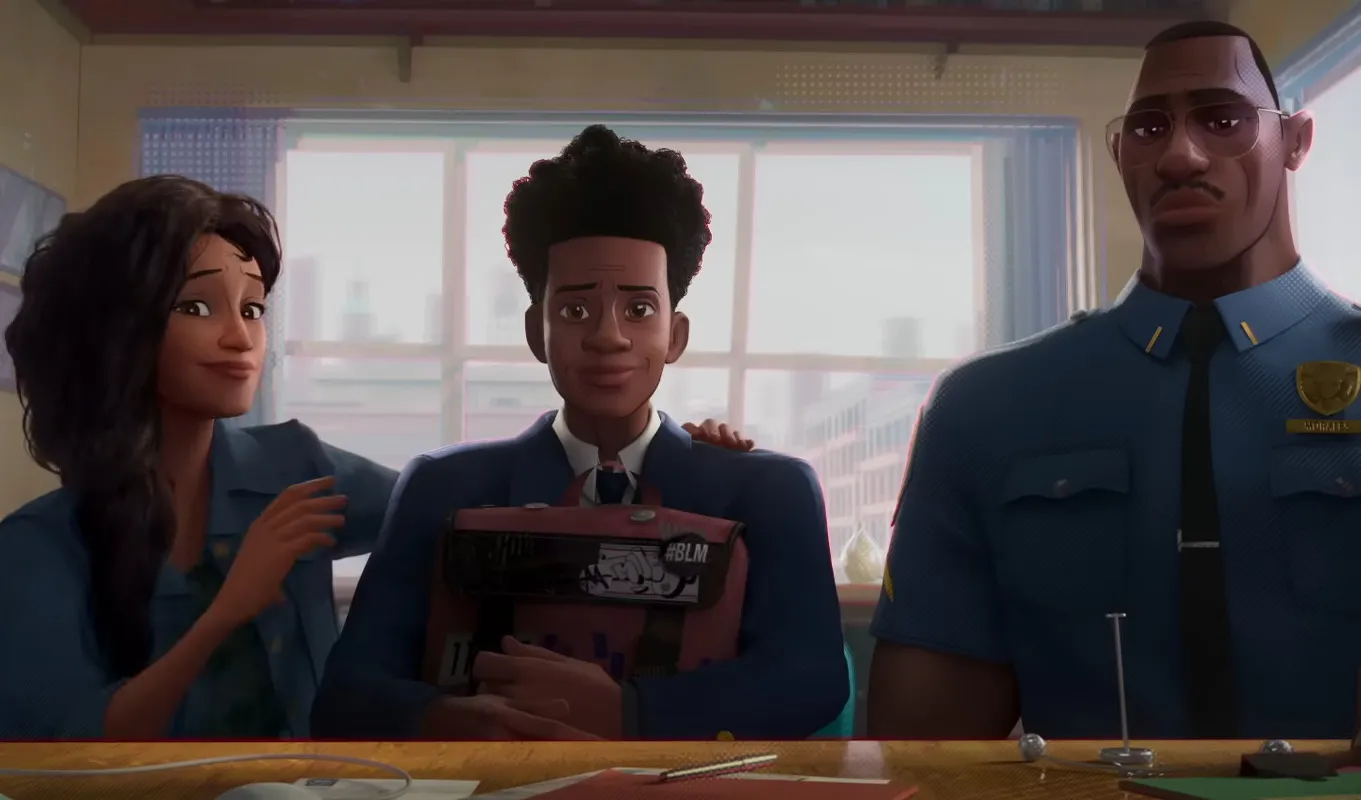
There has been an increased push for diverse stories and casts in the last decade or so, but sometimes a character can feel reduced to their identity, with no personality beyond it. Miles Morales is biracial, his father being African-American, and his mother Puerto Rican, and it plays strongly into his character. His mother worries about Miles losing his Spanish, while his father pushes him to work hard in school.
When the Miles Morales comics were first released in 2011, Miles’ identity was criticized as an attempt to be “politically correct”, and some of this criticism bled over into the “Spider-Verse” franchise when it was first released. However, it does not feel like a “publicity stunt” in the movie.
Both sides of Miles’ identity are present in multiple scenes and play into his personality and decisions, but he is not reduced to that. His story is not about his biracial identity but about a teenager navigating forces much bigger than him while trying to do the right thing, which is much more meaningful and heartfelt.
3. Complex Morality
Animation is often thought to be for children and unsuitable for showcasing more mature or complex themes. This has been changing in the last few years, and “Across the Spider-Verse” leans into this.
While using typical Spider-Man humor of cracking one-liners during serious situations, the movie raises a moral dilemma: should Miles allow his father to die to keep the multiverse stable, or should he save his father and possibly let reality collapse? Despite its PG rating, this movie weighs the meaning of lives against each other, and does not yet give a clear answer.

These questions of what the “right thing” means brings complexity to the “good vs evil” narrative of superheroes, and does so without altering the villains. This has been a recent trend with villains such as Loki, and Disney’s recent lack of a “real” villain entirely. Spot, the rising antagonist of “Across the Spider-Verse”, is clearly evil in his characterization, so the pressure falls to the protagonist.
This complicated situation puts viewers more into Miles’ shoes and has them debating for themselves what they would do. This makes the movie more impactful overall while also drawing the audience back to see how it is resolved.
4. Natural Characterization
Both movies focus around teenagers, and it is reflected in their dialogue and actions. Miles texts his dad during a fight, including typos and emojis, and his interactions with his parents are familiar. He argues with them over small things, he is always late to events, and he whines when he gets grounded.
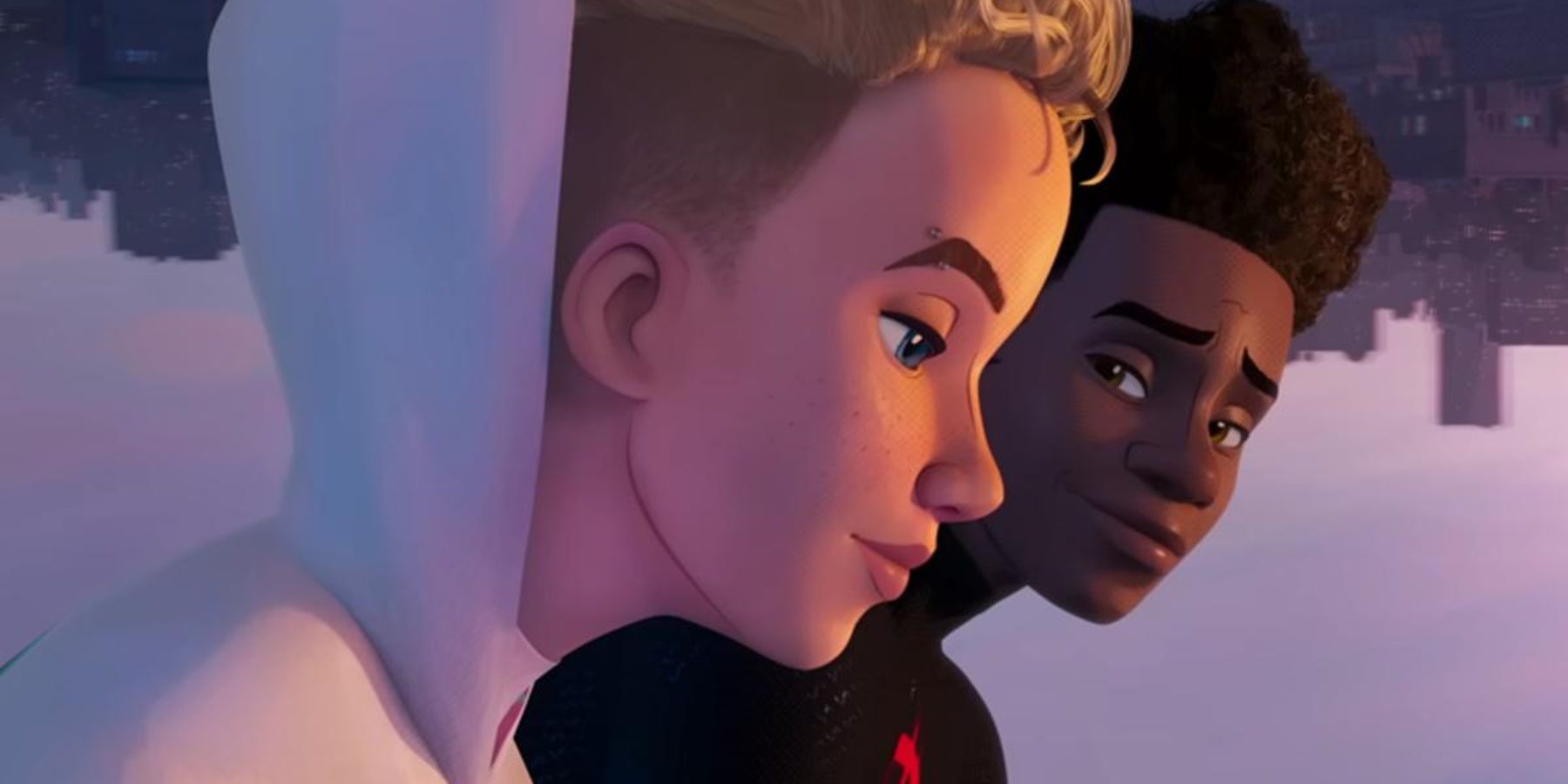
Gwen and Miles’ dynamic feels natural to the audience because of the attention to detail in their mannerisms and speech. Both characters struggle to make friends, and it shows in their awkwardness in their early interactions. Their feelings for each other are shown subtly but noticeably in how they grow comfortable together, yet still have typical “awkward crush” moments when they get too close.
It can be rare to find teenage characters that feel genuine – a breath of fresh air for many viewers. Gwen and Miles are allowed to be moody and stressed sixteen year olds without being shamed for it, and they’re not oversexualised either. Many depictions of teenagers in media push the trend of going to parties or coping with the more sexual aspect of young love. However, Gwen and Miles show the softer side of being a teenager and all of the awkwardness that comes with it, and these behaviors endear them to the audience.
5. Modern Music
Both movies have been popular not just for the film itself, but for their soundtracks as well. Featuring artists like Post Malone, Metro Boomin and ASAP Rocky, the spoken songs are combined with the standard orchestral soundtrack in scene backgrounds. Most notable of these is the iconic “What’s Up Danger” scene from “Into the Spider-Verse”, where Miles comes into his own version of Spider-Man.
The music feels very grounded in Miles’ universe, and helps maintain his modern teenage character while providing energy to scenes. They feel like songs he would listen to, which he does in the first movie, singing along to Post Malone and Swae Lee’s “Sunflower”.
Currently, it is common for movies to include modern music as backing to scenes rather than an orchestral soundtrack, but “Into the Spider-Verse” was one of the first to do this. This music is a memorable aspect that can be interacted with outside the film itself, allowing it to get attention in other ways.
6. Beautiful Animation

One of the most well-known things about the “Spider-verse” movies is their gorgeous visual aspect. They are very satisfying to watch, not just because of the beautiful backgrounds, but the clean animation style. No matter where it is paused, there is a solid shot – there are no motion or background blurs, which blended with its comic art inspiration.
In a WIRED interview, the head creators of “Into the Spider-verse” discussed allowing the animation style to support the storytelling. For example, when Miles and Peter are starting their training together, Miles’ animation only moves every other frame – this is called animating on “2s”. Even at the fast pace of the movie, this subconsciously makes Miles feel much clunkier and more awkward.
At that stage, Miles is unsure of himself and his abilities, and hasn’t settled into his dynamic with Peter yet. However, when the two start to move in sync during their training, both are animated on “1s”, moving in every frame together. This reflects their mentorship relationship solidifying and Miles’ first steps to truly becoming Spider-Man.
New technology was advanced for this method of the animation itself supporting the storytelling and a desire for innovating something unique, and it pays off.
7. Combining Art Forms
Gwen’s watercolor and Hobie’s scrapbook style stand out sharply as unconventional art styles in the movies, along with different animation styles. Spider-Ham is based on 60s cartoons, and Peni Parker is inspired by Japanese anime.
This variety makes the series feel like a love letter to visual art as a whole. Comic art is the primary reference, using dots, hashes, and split colors or half-tones for shading and distance blurs. These methods shape focus and detail without “softening” the picture itself, leaving it clean and distinct.
Linework is overlayed over the 3D animation model itself gives more life to expression and mirror the heavier outlines in the comic style. New technology was innovated for these styles, which is why each movie in the series takes so long to produce.
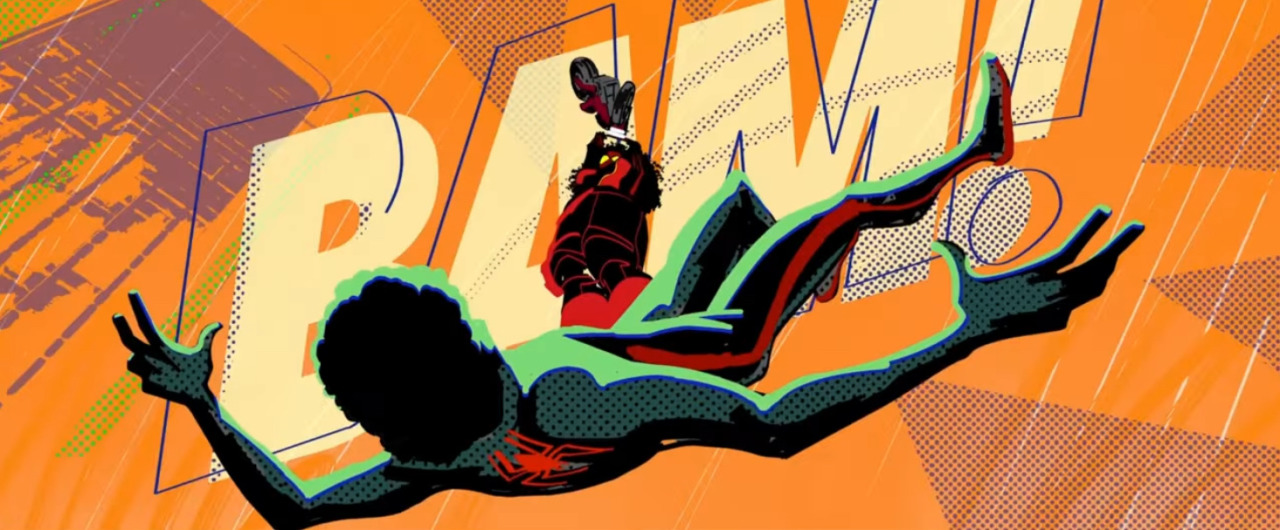
Movement lines and sound bubbles for impact are also common throughout the films. These make the movies feel like living comic books, which is unique and one of the main praises given to the series overall.
8. New Perspective on Familiar Ideas
In a time of constant remakes and superhero multiverse movies, it can seem repetitive to look at Spider-Man again. However, “Into the Spider-verse” was one of the first to use the multiverse trope, and is still one of the most successful.

Spider-Man is known for having more than 100 variations, and used them through inter-universe video games before “Into the Spider-Verse”. This series began centered around the multiverse ideas, rather than adding it later once characters already developed. With the plot based on doppelgangers and learning to be different, themes and character development progressed alongside the trope, rather than fighting itself.
Having Miles, rather than an original Peter Parker, as the centerpiece makes this a different take on the multiverse trope. Miles is not supposed to be Spider-Man, and having a “mistake” as the focus rather than an “original” looking at variants of itself is much more interesting to an audience.
9. Focused On and Made For Young People
The “Spider-Verse” series is particularly meaningful for teenagers and people in their early 20s. Themes of breaking from the “normal” path and finding creative ways of doing things have hit home with this generation.
The movies also say that anyone can be a source of good in the world, and it can often be through a unique path. This message comforts and inspires many, especially in a time when new opportunities evolve each day and individuality is of great value to the new generation.

From its stunning visuals to its impactful story and characters, the “Spider-Verse” series has touched the hearts of many. There is no official release date for “Beyond the Spider-Verse” but after being delayed due to the writers’ and actors’ strikes in 2023, viewers eagerly await the continuation of the beloved series.


